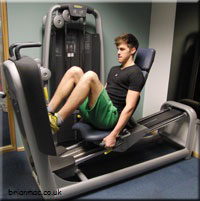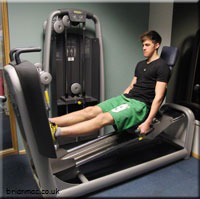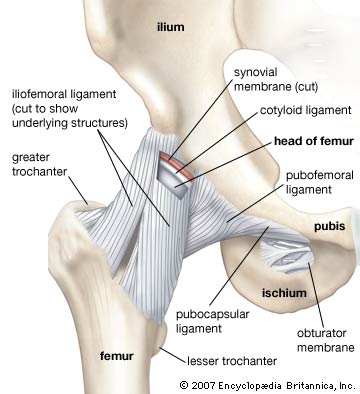
THE LEG PRESS
Starting position
Assume the seated position so that your back is flat against the back support when your knees are bent at the angle needed. This should be at 90 degrees between the hip and the knee. After the seat is adjusted for this positioning, place both feet flat on the foot platform about waist-width apart. Grasp the handgrips with a light grip to avoid build up of pressure during movement.
Joint movement: flexion of the hip and knee joint, dorsiflexion of ankle joint.

Execution
Inhale slightly when ready to start and hold your breath as you extend the legs and push the foot platform away from you using the heels of your feet (with slight support from the balls of the feet). Push the foot platforms away until the legs are fully extended but not locked.
Joint movement: Extension of the hip and knee joint, plantarflexion of ankle joint.

Recovery
Hold position after reaching the end position, exhale and relax the muscles slightly to slowly control the movement back to the original position (90-degree angle in the knee joint). You must keep the movement under control – do not bounce the weight stack. Maintain a neutral neck position and pelvic-spinal positioning throughout the movement. The entire movement should be one smooth, fluid motion.
Joint movement: Flexion of the hip and knee joint, dorsiflexion of ankle joint.
THE HIP JOINT
The Acetabulofemoral joint (hip joint) is the articulation of the femur and acetabulum of the pelvic girdle. It is a synovial joint whereby the round head of the femur fits into the cup-like depression in the pelvis (acetabulum). Hence it is a ball-and-socket joint. This joint is tri-axial but for the purpose of the leg press, only extension and flexion occur.
Three main ligaments reinforce the hip joint.
The Iliofemoral ligament attaches anteriorly from the inferior iliac spine of the ilium to the lower part of the intertrochanteric line of the femur. The fibres of the ligaments spiral medially as they run down, so preventing hyperextension of the joint.
The pubofemoral ligament arises from the pubic portion of the acetabular rim, and runs partly below the joint.
The ischiofemoral ligament consists of a band of strong fibres on the posterior side of the hip joint. It spans from the posterior of the acetabulum and attaches at the intertrochanteric line of the femur.

Hip Flexion
Flexion of the hip is primarily due to the contraction of the Iliopsoas muscle, which comprises of the iliacus and psoas components. The Iliacus originates on the pelvic crest and attaches on the femur. The Psoas major, the longer of the two muscles, originates on the lumbar vertebrae and attaches to the femur. The agonists are the Rectus femoris, Pectineus and Sartorius. The antagonist is the hamstring, which lengthens during the contraction of the iliopsoas. The Gluteus Maximus and Adductor Magnus act as synergists. The hamstring also serves as a stabiliser during the hip flexion.

Hip Extension
The primary mover during hip extension is the Gluteus Maximus. The hamstring muscles, Biceps femoris, Semitendinosus and Semimembranus also contribute to hip extension (agonist). The Quadricep acts as the antagonist.

In future posts we will look at the knee joint and ankle joint in more detail. To end off here's a funny video clip about leg pressing from a tv commercial in the US - enjoy. =)
Sources:
Leg Press
http://www.exrx.net/WeightExercises/Quadriceps/SL45LegPress.html Functional Anatomy of the Lower Limb
No comments:
Post a Comment